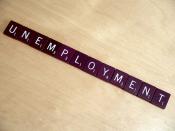Bottlenecks in a Process � PAGE �1�
Bottlenecks in a Process
By definition, a bottleneck is any resource whose capacity is insufficient to satisfy the demand upon it. For example, in a computer network a server could become a bottleneck if it can't send the required data to all computers that request it. Bottlenecks can be not just machines or specialized equipment; skilled workers also can be bottlenecks in a process (Schwab J. & Gerard F, 2006.)
The effect bottlenecks have in production lines is that they limit throughput. In addition, if a process did not have a bottleneck, which would be an indication that there is excess capacity. A resource that is not a bottleneck is referred to as a no bottleneck.
Goldratt's Theory of Constraints (TOC)
According to Goldratts, time lost at a bottleneck is time lost for the entire system. (citation) Similarly, time saved at a bottleneck is time save for the entire system.
Bottlenecks act as constraints, and determine the thoroughput of the system. Priorities can only be set by examining the system's constraints. To improve performance, constraints can be identified, and more capacity added to them (Schwab J. & Gerard F, 2006.)
Process analysis
The process I am analyzing is driving to the Unemployment office. This process is depicted in Figure #1. The metric that measures the performance of this process is the time that it takes to drive to the Unemployment office.
Figure 1. Flowchart of current process driving to the Unemployment office.
I have collected data for this process for three weeks. Table 1 provides a summary for the same.
Day of the Week | Driving Time (minutes) | ||
Week #1 | Week #2 | Week #3 | |
Monday | 22 | 24 | 22 |
Tuesday | 17 | 17 | 17 |
Wednesday | 15 | 16 | 16 |
Thursday | 25 | 24 | 24 |
Friday | 29 | 26 | 29 |
Table 1. Driving time from home to the Unemployment office.
Looking at the process and the metrics, my bottleneck is the amount of gasoline I have in my car in the morning. If I do not have enough gasoline in the tank, I have to drive to the gas station, which adds a potentially large amount of time to my drive.
Applying the Goldratts TOC, can improve performance in those tasks I have collected, which reduce drive time, and ensuring there is enough gasoline in the tank before initiating my drive to the Unemployment office every morning. This could be accomplished by filling up the tank on Sunday evening, which will give me enough gasoline for the weekdays. Filling up the tank on Sunday is equivalent to adding capacity, as per Goldratts TOC.
Conclusion
A process' performance can be improved if its bottlenecks are identified and addressed. In this regard, Goldratts TOC can be a useful tool to apply for process improvement. After using this TOC, I believe I will be able to improve the efficiency in my daily driving process.
References
Schwab, R. B., Joseph, F. R., & Gerard F, N. J. (2004). Operations management for healthier organization (10th ed.). New York: McGraw-Hill.
_1337161865.vsd
Close garage door and drive to street
Start and warm up car engine
YES
Do I have enough gas in the tank?
Find parking space
Drive to Unemployment office
NO
Park car
Open garage door
Turn off car engine
Enter Unemployment office
Exit freeway
Drive to freeway
Go to gas station


